
Top 3 Sales Funnel Management Software [2023 Edition]
 Updated on
Updated on
By Ringy
Table of Contents
Table of Contents
Let's get this straight.
Achieving your sales goals is about more than building a sales funnel.
Knowing terms like the top, middle, and bottom of the funnel without implementing them the right way makes your sales process more complex and closing deals all but impossible.
If building a sales funnel is the only thing you need to do, then why is it that 79% of marketing leads are never converted into sales?
Monitoring your sales funnel helps you track your prospects' behaviors as they interact with your business and go through the stages of the buyer's journey.
Knowing their behaviors enable you to spot and repeat patterns that drive your prospects towards closed deals.
This article discusses the meaning of sales funnel management, the importance of implementing this process, and a breakdown of the funnel management process.
P.S. If you already know all of this, you can skip to our list of top sales funnel management software to optimize your sales process and increase your revenue.
What Is Sales Funnel Management?
Sales funnel management helps you organize, track, and analyze interactions with your prospects along their journey through each stage in your funnel. These interactions include initial sales calls, email campaigns, and phone calls, which lead to closing a deal. Monitoring customer engagement as they move through your sales funnel helps you pinpoint areas that motivate your prospects to close.
A sales funnel is a visual representation of the stages people go through as they engage with your business, from being prospects to being customers.
The stages of a sales funnel are:
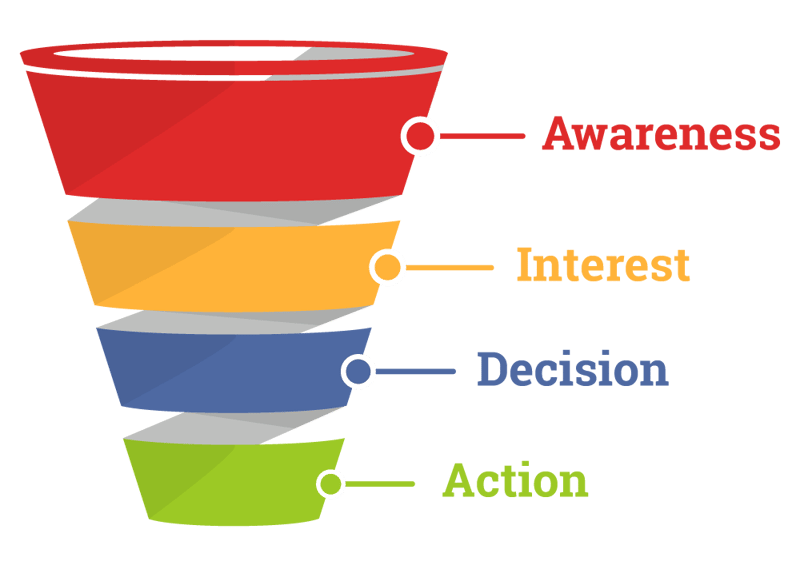
In brief:
- Awareness: people first hear about your product or service
- Interest: prospects evaluate what you offer and compare it with your competitors
- Decision: potential customers go deeper – they look at your pricing, package options, etc.
- Action: prospects either make a purchase or not
Funnel management involves closely tracking customers at each of these stages. This allows you to gauge their interest and help push them in the right direction – making a purchase.
It also helps you categorize and prioritize leads. If prospects don't seem likely to end up making a purchase, you can put them on the back burner and focus your attention on those who are more likely to become customers.
Why Is Funnel Management Important?
Funnel management goes further than using a sales funnel to visualize your customer journey from the first time they become aware of you to when they purchase your product and become customers. Funnel management enables you to spot the leaks in your sales funnel where you lose leads and gain insights on how to plug them.
We call the visualization a sales funnel because it is widest at the top and becomes narrower as we get to the bottom. A 100% conversion rate is near impossible, and all you can do is your best to ensure your product or service satisfies your customers.
The problem is when you cannot identify why your leads drop off your sales funnel. Without funnel management to monitor the why, when, and how prospects leave your sales funnel, you have leads that turn to untapped opportunities because you fail to notice them.
Managing your sales funnel correctly helps you:
- Discover where clients fall out of your sales funnels
- Give the right message at the right time (to the right people)
- Understand customer patterns from detailed reports
- Retain customers and get referrals
Let's take a closer look.
Discover where clients fall out of your sales funnels
Why is pinpointing the leaks in your sales funnel important?
The obvious answer is that if you don't know where the leaks are, you won't be able to plug them.
For example, maybe you're doing great at attracting new leads, but most of your customers are dropping off at the demo stage. Something is going wrong with sales presentations, then.
68% of companies have not attempted to identify or measure their sales funnel. Now consider that, on average, only 13% of leads turn into opportunities, and only 6% of these convert to closed deals.
Coincidence? We think not.
Sales funnel management does not mean you will convert all the leads that enter your sales funnel. Instead, it helps you learn more about why leads advance to the next stage – and why they don't.
Monitoring your sales funnel enables you to measure the outcomes of projects like drip campaigns so you can repeat what works.
Give the right message at the right time (to the right people)
Sending the right message to your leads can improve engagement and drive purchases.
98% of sales don't happen till after the first point of contact. That's a lot of lost deals if you stop after your first cold call and fail to follow up.
With 60% of customers rejecting your offers up to four times before deciding to purchase, persistence plays another role in following up with your leads. But, it's not enough to simply follow up.
Effective follow-up requires timing and sharing the right message.
Sales funnel management can help you determine the right time to call prospects back and base the conversation on their current sales funnel stage while building upon previous interactions between them and your brand.
Sending a message 24 hours after the first contact results in about a 25% reply rate from prospects. And when a prospect reaches out, respond as soon as possible because 50% of buyers choose the vendor that replies first.
Or let's say you see a lead drop out at the decision stage. This means they dug deeper into your product or service but decided not to make a purchase for some reason. You can then send them an email to follow up and win them back.
Here's a quick example:
Hi [name],
We spoke about [problem/issue/need] last week. I was wondering if you were able to find a solution. I'd love to help you out if you need more information.
Just hit reply, and let me know how I can help.
Best,
[Your name]
Interacting with leads before they make their first purchase is essential.
But the best sales reps reach out even after customers make a purchase.
After converting your leads to customers, the follow-up helps you build a relationship that you can use to motivate more purchases in the future and get them to refer other potential customers.
With lead funnel management, you can schedule a "thank you" message or content that shows customers how to use your product better. You give your customers added value, and at the same time, you can analyze which types of messages lead to return customers the most.
Understand customer patterns from detailed reports
What if you could see the campaigns with higher conversion rates or discover the channels that brought in the most qualified leads?
You would study them to find what works, why it works, and how you can repeat it to give consistent, predictable results for more sales.
With sales funnel management, you are able to gather information about every lead at each stage. With such insights, you can easily spot customer patterns and use the best sales strategy to convert prospects.
Marketing influencers say that 45% of sales are complex, and not understanding how your customers engage with your campaigns makes it more complicated.
Sales funnel management helps you simplify your process and enables your sales reps to quickly identify, classify, and qualify leads so you can increase the chances of converting prospects into customers.
Retain customers and get referrals
Sales funnel optimization enables you to stay in touch with customers after they purchase your product so you can maintain engagement and motivate them to repurchase your product or refer it to friends.
The most successful sales teams do not stop at shaking hands – you can get more from return customers than from new ones:
- Existing customers make 33% more purchases than new customers
- You can spend up to five times more when trying to acquire a new customer than retaining one
- You have a higher success rate of 60-70% when selling to an existing customer (compared to a 5-20% success rate when selling to a new customer)
Undoubtedly, customer retention can help you hit – and exceed – your sales quotas.
By now, we dare say you're utterly convinced of the value of funnel management.
Now let's take a deep dive into the stages of a sales funnel and the funnel management process.
Funnel Management Process Explained
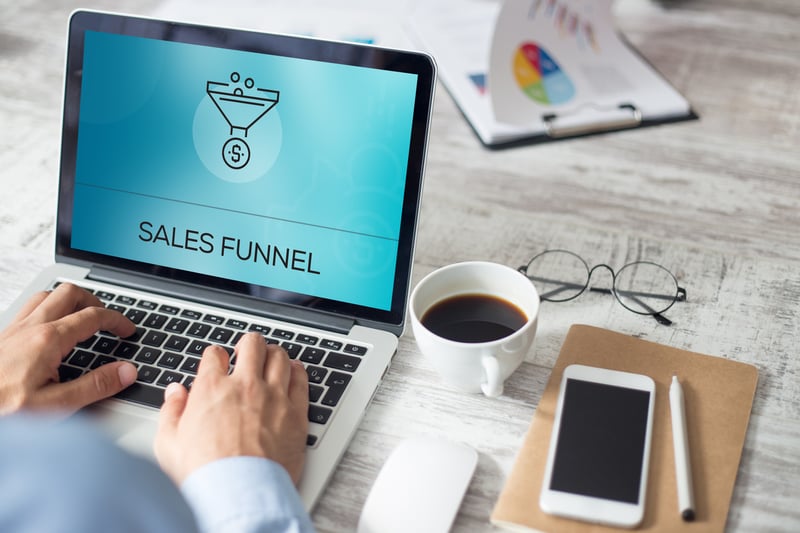
Even the most perfect leads could drop out before converting to customers if you don't pay enough attention.
Sales funnel management helps your sales rep address roadblocks and tackle the issues behind low conversion rates.
But you can't manage something if you don't have a clear picture of it.
An excellent sales funnel management strategy gives you an in-depth look into how leads interact with your brand at the respective stages of your sales funnel. The insights you gain from monitoring your sales funnel can help you optimize, automate, and improve the conversion of the maximum number of leads from each stage to the next.
Let's quickly revisit the sales funnel stages:
|
Sales funnel stage |
Overview |
|
Awareness |
|
|
Interest |
|
|
Decision |
|
|
Action |
|
Awareness
Like every other relationship, you and your prospects start as strangers.
While they may have caught your eye, your leads don't know who you are, what you do, and how you can help them.
The awareness stage is meant for you to introduce yourself to your audience so that you can later nurture their interest in your product.
Strategically place fun and informative content on topics related to your product on platforms where your leads are present the most. The point is to create a foundation on which you can build a relationship. In this stage, you play it cool and refrain from flashy pitches.
It also helps you better understand your potential customers, their pain points, and areas where you can adjust your message to suit them more.
You can use sales funnel management to understand conversion rates and plan your next move – modifying your content or changing platforms.
Building your brand awareness involves:
- Educational content (blog posts, webinars, and videos)
- Cold calls
- Sponsored social media posts
- Ads
With proper lead funnel management, you can avoid overcrowding this stage with unqualified leads that would never turn into customers and focus on quality rather than quantity.
Interest
Now that your target audience knows you exist, the next step is to pique their interest.
80% of consumers are more likely to purchase when brands offer personalized experiences. By customizing your content to be more customer-centric, leads can bond better with your brand because, like a true friend, you show that you listen to them.
That means hyper-personalized emails showing use cases to show how your product solves your prospect's problem. You get to know them and their deepest desires. And you give them solutions.
These include providing useful resources:
- In-depth content such as how-tos and guides
- Free eBooks
- Free webinars
Sales funnel management in the interest stage includes monitoring crucial metrics that highlight leads' engagement, including:
- Click-through rates
- Email open rates
- Average time on page
Decision
Leads that you successfully convert to this stage become full-fledged prospects. They are interested in your business enough to consider purchasing your product.
But you still need to carefully monitor this stage because most prospects drop out of your sales funnel here or become cold leads when you don't pay them enough attention or offer ways to allow them to try your product risk-free.
You can motivate prospects to use your products by offering:
- Product discounts
- Free trials
- Testimonials
Let your prospects experience what it feels like to use your product without coming off as desperate. To make it more convenient, introduce low-risk situations for them to explore your product's features.
Action
This stage is the final yet potentially fatal step before sealing the deal.
An “almost yes” does not equate to a “yes.”
Almost only counts in horseshoes and hand grenades.
While you can be excited at your prospect showing commitment to purchase your product, there is no guarantee till you close the sale.
Knowing when a prospect is at this stage is a signal for you to ask for that “yes.”
But managing your action stage does not stop after you get a “yes.”
Once the deal is done, implement an onboarding process in the form of product training webinars or using bundled packages to enable customers to explore several value options. This will encourage your customers to come back and make referrals.
Top 3 Sales Funnel Management Software
Managing your sales funnel efficiently can be mind-boggling due to the sheer amount of metrics that need to be monitored and the difficulties involved with implementing the right strategy at the right stage.
But armed with the following software tools, you can easily automate processes, get detailed reports on lead conversion, and improve your sales strategy at each stage.
We know you want to get the best bang for your buck, so here's an overview of the top sales funnel management software and their pricing.
|
Sales Funnel Management Software |
Pricing |
|
Ringy |
$109 per user per month |
|
Zendesk Sell |
Starts at $19 per user per month, with a 30-day free trial |
|
Systeme |
$27-$97 per month, with a free plan |
Ringy
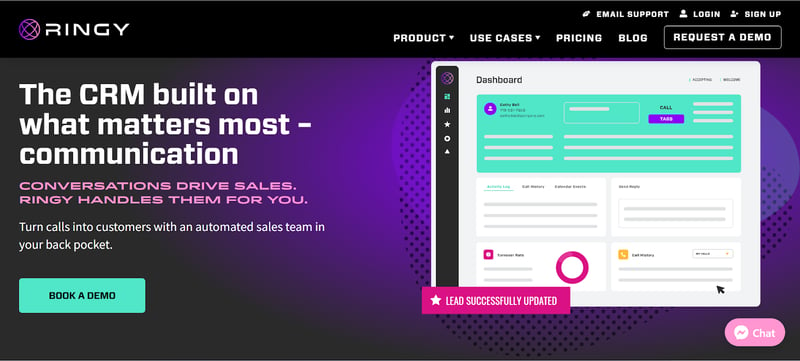
Yes, we've included ourselves on the list because we believe we offer the best solution to your sales funnel management woes.
Right off the bat, here's what we bring to the table…or funnel:
- Automated data entry for emails and SMS
- Contact management, including segmentation for targeting
- Drip campaigns
- Insights and reports on campaigns
- Automate communication with prospects, and customers
Drip campaigns are especially useful for funnel management since it enables you to engage your leads across all the stages of your sales funnel. Plus, with automatic messages, Ringy ensures that your cold leads are nurtured while you focus on selling.
Our clients can tell you how we've helped them with their sales funnel – see what they have to say.
But why not see for yourself and take a more comprehensive look at our features?
The best part? Our pricing is straightforward – $109 per user per month.
*Pricing accurate as of July 2022
Zendesk Sell
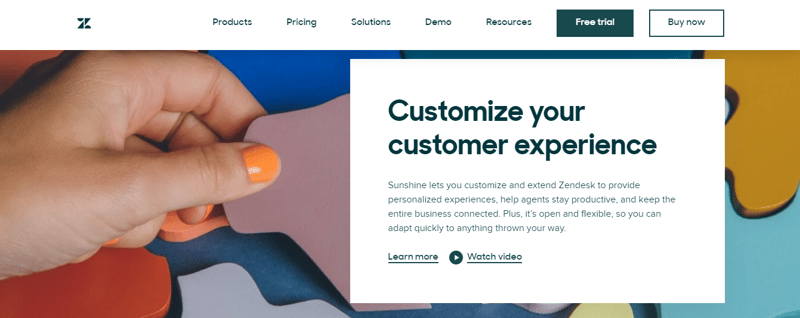
From its sales dashboard and analytics tools to lead organization with custom fields, Zendesk Sell provides complete funnel visibility for your sales reps.
Zendesk Sell lets you quickly build flow fields to track prospects from lead to customer and track sales campaign results.
This is particularly helpful since new sales reps can find it confusing to add new leads because of some set fields you can't use or delete.
Pricing starts at $19 per user per month, with a 30-day free trial.
*Pricing accurate as of July 2022
Systeme

Systeme's freemium plan offers impressive features, including landing page creation and email templates. It is perfect for sales teams that want to try out lead funnel management without spending a dime.
Systeme also offers:
- Contact management from 2,000 to unlimited contacts
- Build and manage an unlimited number of sales funnels
- Implement automation to streamline sales funnel workflows
While this software is excellent for small businesses getting started, the landing page forms can be generic and lacking in customization.
Systeme costs $27-$97 per month, with a free plan available.
*Pricing accurate as of July 2022
Funnel Management FAQs
“What are the best practices for sales funnel management?”
Some of the best practices for sales funnel management are:
- Align with the marketing team and stay on the same page regarding qualified leads, changes to the sales funnel stages, and insights on customer behavior
- Clarify the criteria for leads to move through the sales funnel for more efficient tracking
- Train sales reps to communicate appropriately for each funnel stage
- Learn and adapt from metrics to reduce clogs
“What are the types of sales funnels?”
There are many types of sales funnels, but here are some of the most common:
- Automated seminar funnel for warming up your leads with video sessions to purchase high-value products
- Lead generation funnel for growing your audience and, yes, generating leads
- Organic content marketing funnel for building your following without using sponsored ads
- Product launch funnel for building product hype and motivating prospects to purchase before launch
- Self-liquidating funnel for acquiring leads cost-effectively
“What is a CRM sales funnel?”
A CRM sales funnel is a system for monitoring, analyzing, and reporting potential and existing customers' communication with your business. With a CRM, you can automate messages to interact with leads in each stage of your sales funnel and better identify qualified leads as they move from the top to the bottom.
Wrapping up
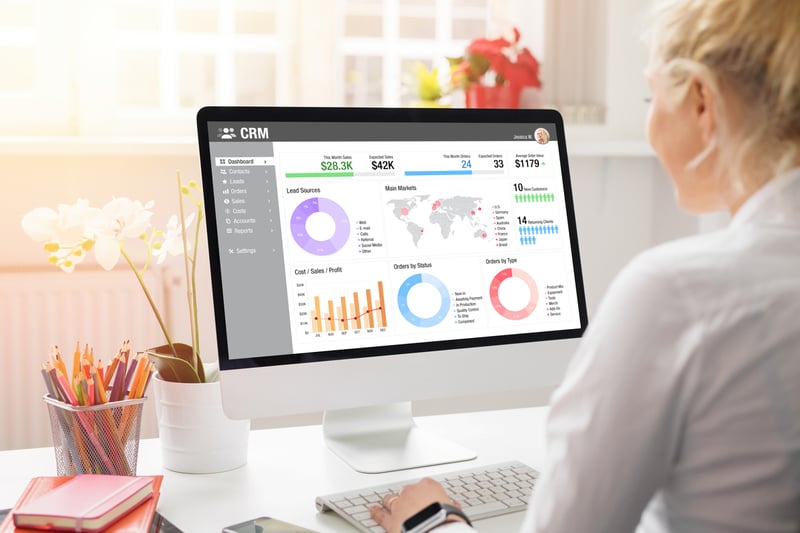
Sales funnel management helps you:
- Streamline how your prospects move through each stage of the customer journey
- Thoughtfully implement strategies to increase conversion rates
You should also leverage software tools to make sales funnel management even more efficient and effective.
With Ringy's automation features, detailed reporting, and contact management, you can easily maintain both a bird's eye view and an in-depth analysis of your sales funnel.
Request a demo, and let's get started.

Skyrocket your sales with the CRM that does it all.
Calling? Check. SMS? Check. Automation and AI? Check. Effortlessly keep in touch with your customers and boost your revenue without limits.

Take your sales to new heights with Ringy.
Sales in a slump? Ringy gives you the tools and flexibility you need to capture leads, engage with them, and turn them into customers.
Subscribe to Our Blog
Enter your email to get the latest updates sent straight to your inbox!
Categories
Related Articles



































































































